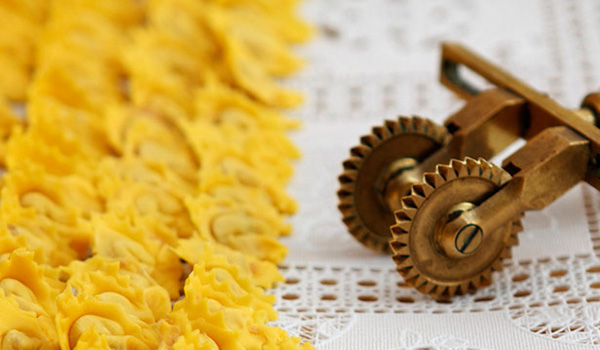
The fame and reputation of the cuisine of Emilia is based on two principle elements: pasta, both filled and unfilled, and pork. The land that has seen the birth of banquet- show, whose forming is characterized by pig-breeding, has always been, and still is, extremely varied. Pork remains one of the unifying elements, a tribute to a meat culture that originated with the Lombards, and reaches Romagna, where the sheep prevails. Cooked salami-type sausages, such as mortadella (baloney), or those matured at length, such as prosciutto or culatello (both types of ham), now belong to universal gastronomy, not only Italian. We must also not forget the sweet salamis of Parma, or those made with garlic in Ferrara, or the ‘coppa’ from Piacenza. The list could go on, as could that listing the various types of pasta: tagliatelle, tortelloni di zucca, lasagna, maltagliati, etc. The ‘prince’ of dishes of this region, remains, however, without doubt the tortellino (a filled, fresh pasta). “…as you journey between just ten motorway tollbooths, you drive past grana, to parmigiano reggiano, which are both similar, parmesan-style, cheeses, from the agnolini to the tortelli, tortellini, and cappelletti, all similar types of filled, fresh pasta that presuppose different recipes. As you head towards the coast, the dialect and architecture change, in the journey to arrive at the famous mosaics of Ravenna you have to cross Roman Modena, Gothic Bologna, and perhaps even make a stop to admire the Renaissance influence at Ferrara…” Many books have been written, and many legends born, of the tortellino and its variants (cappelletti, agnolini), the true symbol of Bologna cuisine. There are references to its being called ‘Venus’s navel’, or being mentioned in conjunction with the city of Castelfranco Emilia, the mediaeval birthplace of the tortellino. In Bologna, the term “tortello” appeared for the first time in 1289. During the renaissance period, important writers spoke about tortellini, while in the seventeenth and eighteenth centuries, they no longer accompanied large banquets or featured in cuisine. It is believed that, for some reason, in this period the tortellini underwent a change of image and was considered too ordinary for the tables of the rich, yet, at the same time, too rich for the tables of the poor. Worldwide interest in tortellini is a relatively recent fact and dates from the turn of the nineteenth century, the period that coincides with the phase of the city’s industrial development. The classical sauce was a broth made from mature chicken or capon; now the best known are cream or ragu, both very recent, dating from the 1950s and 1960s. Who knows, perhaps the symbol of the region of Emilia Romagna should be represented by the image of a traditional housewife, wrapped up in ‘sheet’ pasta, holding a rolling pin (used for making the pasta mix), whilst a tortellino shines on her forehead, just like a tiara. The course of regional cuisine dedicated to Emilia Romagna includes work on making this form of pasta. In fact, it will be the true mistresses of this art, the housewives, who must teach the grand and difficult task of making the perfect pasta mix, which must be worked and worked and worked… until it is perfect.


